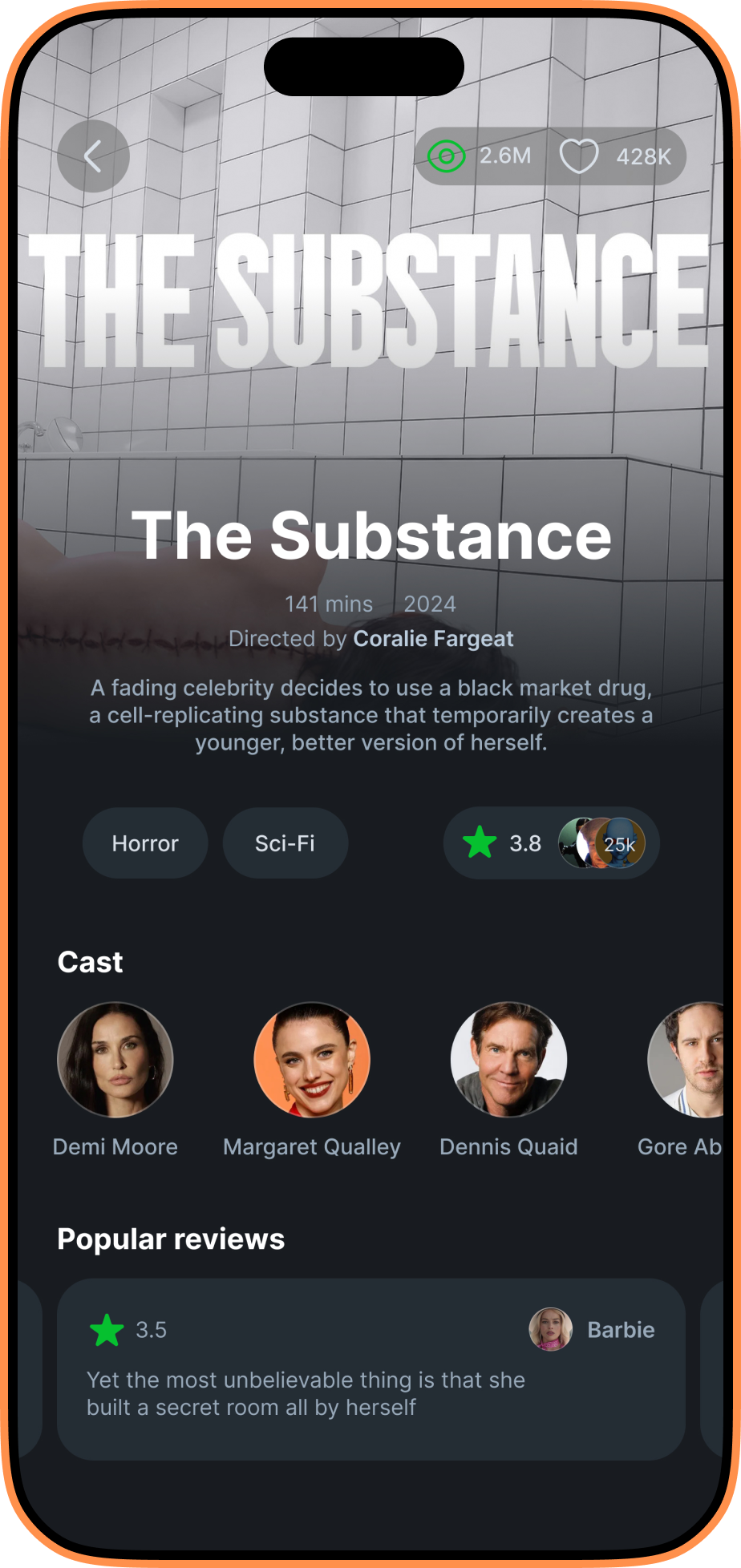LetterMatchd Setup Flow
The LetterMatchd Setup Flow is a three-step interaction designed to transition users directly into the app’s core experience, where they select a film for a movie night. This flow is presented immediately upon launching the app.
The first screen introduces streaming service selection, allowing users to filter by platforms they subscribe to. This ensures that recommended titles are always accessible. Selections are made via tappable buttons with familiar brand cues (e.g., the Netflix "N"), supporting quick cognitive recognition.
In the next step, users choose their favourite genres using pill-shaped tags. The UI utilises a visually balanced tag system with active/inactive states, enabling users to curate a viewing mood that reflects their personal preferences.
From there, the user is guided to "Explore Movies from Watchlists," where they can choose between syncing their personal Letterboxd watchlists or selecting from curated community lists. Lists are presented with cover thumbnails, giving users a preview before diving deeper. Tapping “Select from Lists” expands the view into a modular, scrollable card interface for deeper exploration.
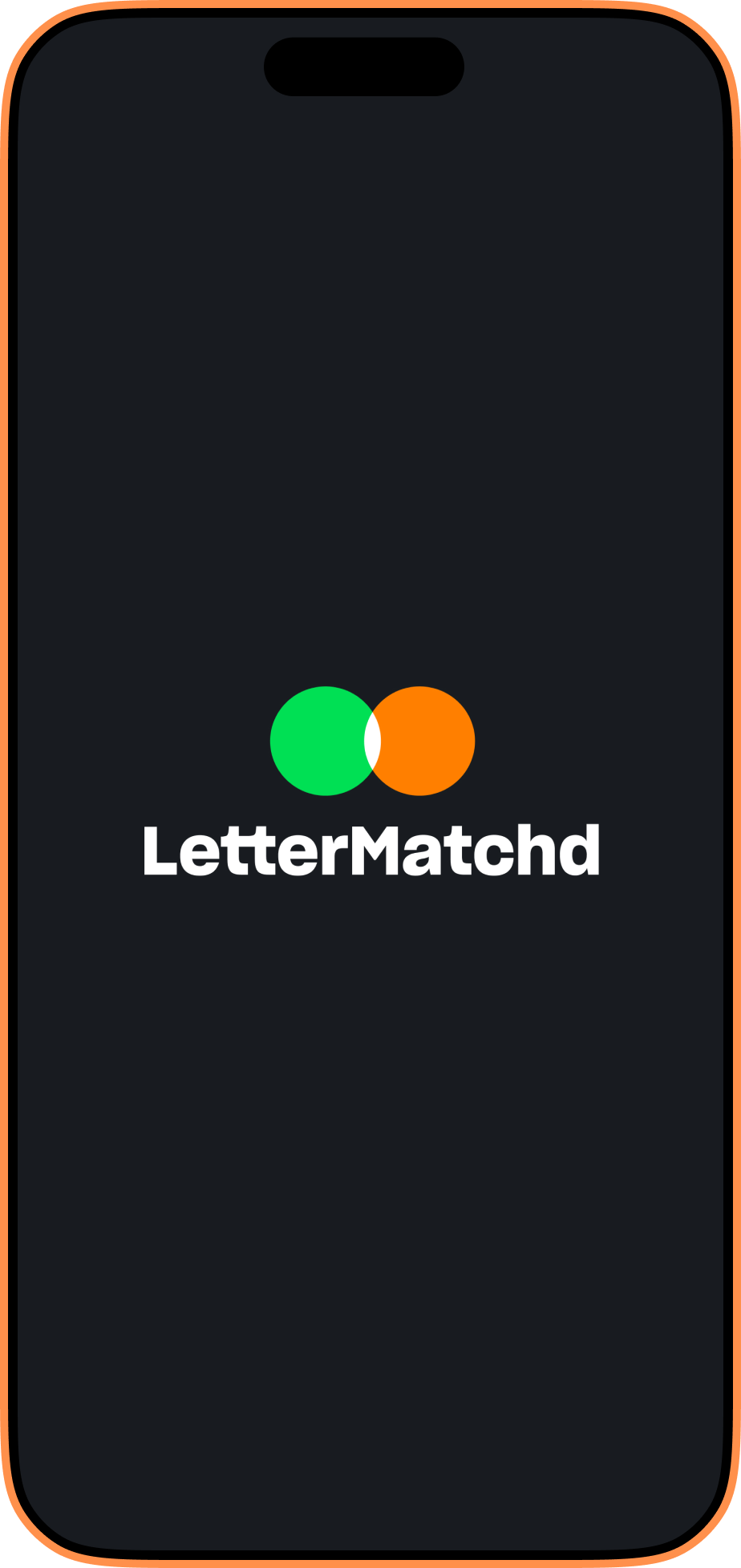
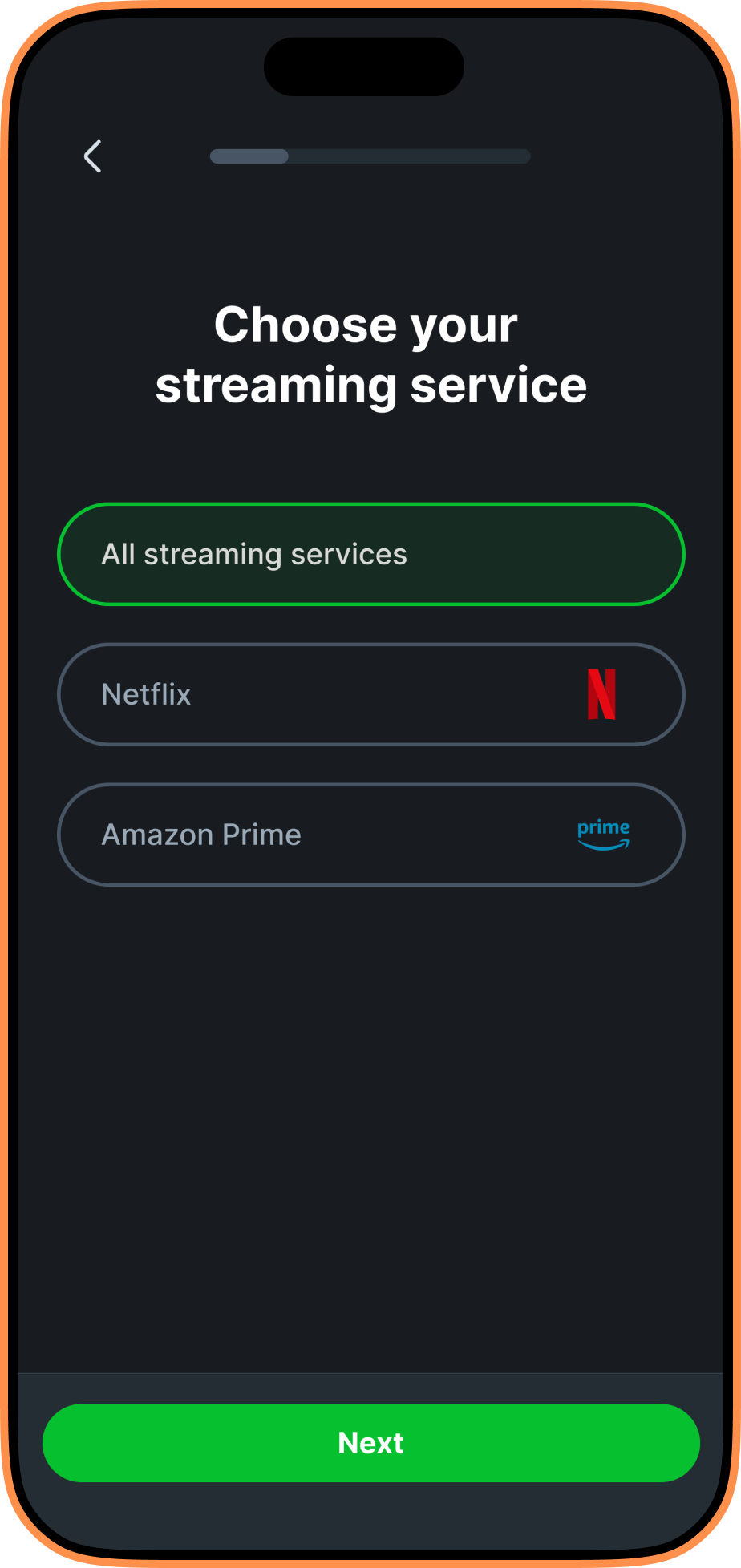

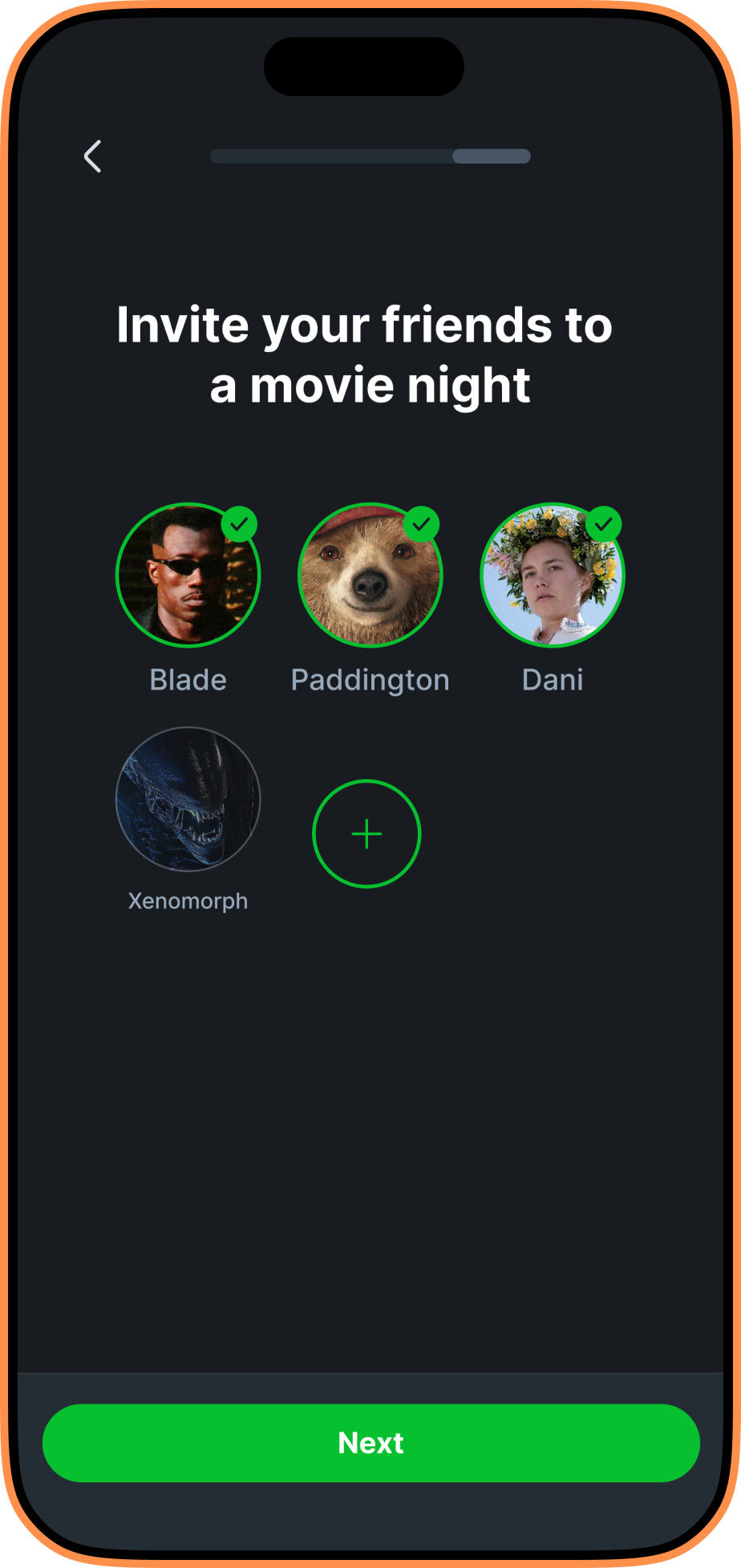

Invite Friends Panel
The Invite Friends panel is activated by tapping the plus icon in the group lobby interface. Once activated, the panel displays a grid of Letterboxd friends, enriched with search capabilities. Users can also copy and share a unique invite link externally.
The Invite Friends panel is activated by tapping the plus icon in the group lobby interface. Once activated, the panel displays a grid of Letterboxd friends, enriched with search capabilities. Users can also copy and share a unique invite link externally.
Friend avatars become highlighted with a green border and checkmark once they join the party lobby, creating real time feedback on readiness. Once all invited participants are marked as ready, you are prepared to start selecting films.
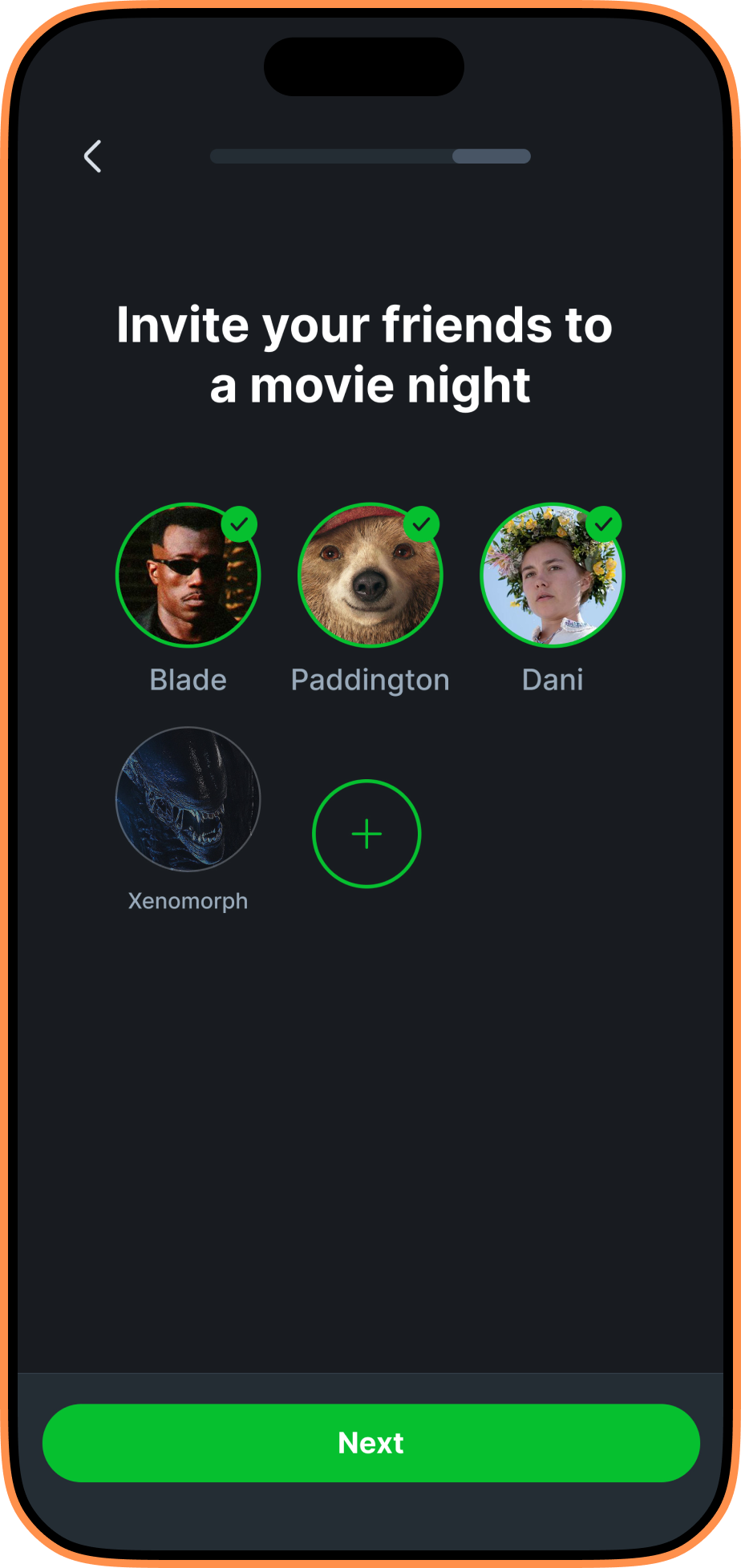

List Selection Module
When selecting a list, users are taken into a List View Module. The visual layout balances thumbnails and metadata, allowing users to gauge whether the list suits their intended vibe before integrating it into their matching flow.
When selecting a list, users are taken into a List View Module. The visual layout balances thumbnails and metadata, allowing users to gauge whether the list suits their intended vibe before integrating it into their matching flow.
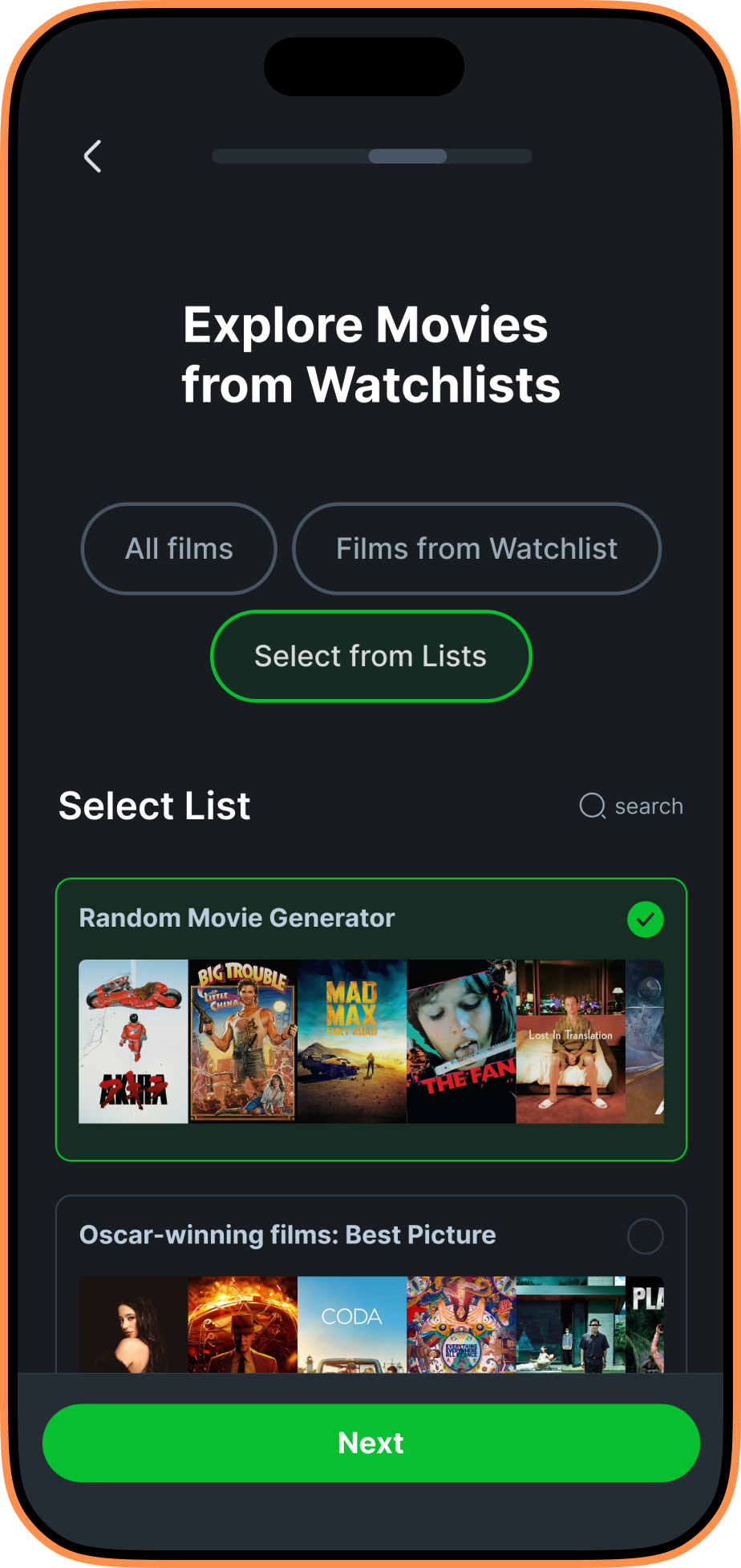
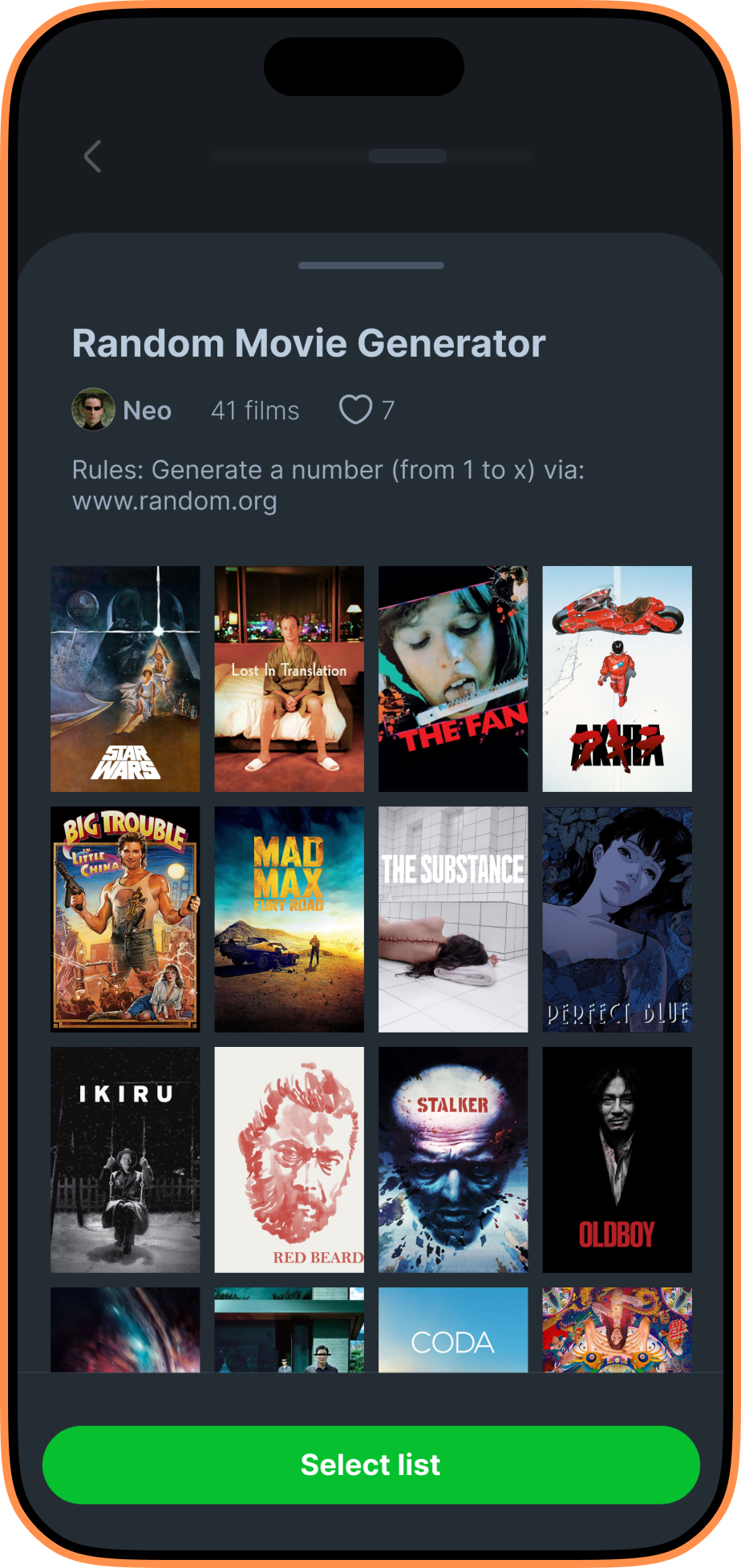
Film Selection Experience
The Film Selection screen is the heart of the LetterMatchd experience. A single movie title is displayed at a time, focusing user attention and avoiding decision fatigue. Each film card includes a poster, genre tags, and a quick synopsis. Tapping the card expands it into a detailed view, featuring the cast and popular reviews.
The Film Selection screen is the heart of the LetterMatchd experience. A single movie title is displayed at a time, focusing user attention and avoiding decision fatigue. Each film card includes a poster, genre tags, and a quick synopsis. Tapping the card expands it into a detailed view, featuring the cast and popular reviews.
Below each film, user avatars provide contextual metadata, displaying which party members have previously watched the film and how they rated it. Ratings are surfaced visually for immediate comparison and influence.
Users respond with a simple "yes" or "no" interaction. Once a unanimous “yes” is received from all members, the Matched Panel appears with options to either proceed with watching or continue swiping for a new film.

